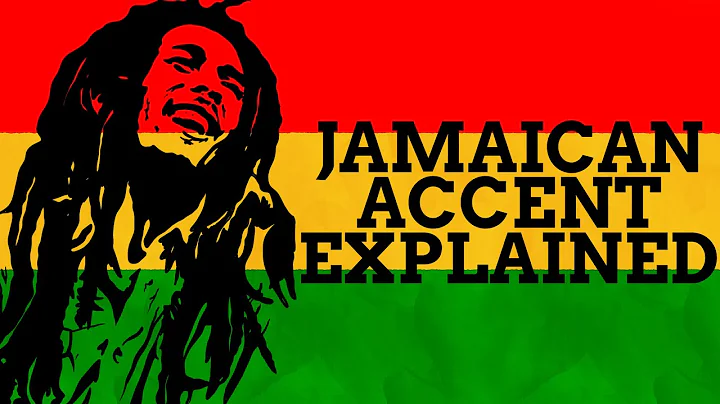Hope, Redemption, and Restoration: Isaiah Reveals God's Promise
Table of Contents
- Introduction
- Isaiah Chapter 4: Verse 1-2
- The Branch of the Lord
- The Remnant of Israel
- The Cleansing of Zion
- God's Presence and Protection
- The Symbolism of Cloud and Fire
- God's Promise to His People
- The Fulfillment of Prophecies
- Conclusion
Isaiah Chapter 4: Verse 1-2
In this section of Isaiah 4, we witness the aftermath of the devastation brought upon God's people for their sins. The previous chapter ended with the men being killed in battle, leaving behind a scarcity of men in the population. As a result, seven women come together and express their desire for marriage, as having a husband and children was seen as a marker of societal acceptance and respect during that time. The reproach they mention is the shame and stigma associated with not being able to have children without a husband.
It is important to note that the chapter break doesn't align perfectly with the content, and this verse should have logically been included in Chapter 3. The message here, however, is clear - the judgment upon the people for their self-centeredness and disregard for God's will has resulted in a severe loss of life and the desperation of the women for marriage.
The Branch of the Lord
Continuing our journey through Isaiah 4, we come across verse 2, which introduces the concept of the "Branch of the Lord." This branch is a metaphorical reference to the messianic prophecy and the lineage of David. The mention of the gloriousness and beauty of the branch paints a stark contrast to the destruction and death described in the previous chapter. It serves as a symbol of hope and redemption in the midst of despair.
The fulfillment of this prophecy can be seen from multiple perspectives - the return of exiles, the coming of Christ, and the end of times when the new Jerusalem will be established. This multifaceted nature of fulfillment is a common characteristic of prophecies in the Bible. The branch of the Lord brings salvation and becomes the pride and honor of the survivors of Israel.
The Remnant of Israel
Verse 3 shifts our attention to the remnant of Israel, those who remain in Zion and Jerusalem. These individuals are described as holy, with their names recorded for life in Jerusalem. The language used here highlights the cleansing and purification that takes place. It speaks of the Lord washing away filth and removing bloodstains through judgment and a spirit of burning.
This cleansing process echoes the inability of man to achieve righteousness and perfection through adherence to the law. It is through the righteousness of Christ and faith in Him that our filth is washed away, and our names are inscribed in the book of the new Jerusalem. This promise of holiness and eternal life is the result of God's grace and the work of Christ.
The Cleansing of Zion
In verses 5-6, we encounter vivid imagery of God's presence and protection over Mount Zion and Jerusalem. A cloud by day and smoke from the shining of a flaming fire by night symbolize God's presence with His people. This imagery harkens back to the time of Moses when God guided the Israelites with a pillar of cloud by day and a pillar of fire by night in the wilderness.
Not only does God assure His presence but also provides protection. The booth that offers shade from the heat and refuge from storms and rain signifies God's care and provision. It is a reminder that God's people, both in Jerusalem and through Christ, can find solace and safety in His presence.
God's Presence and Protection
The cloud and smoke symbolize the tangible signs of God's presence among His people. In ancient times, these manifestations represented the dwelling place of God and His divine guidance. The cloud by day and the fire by night acted as a visible assurance to the Israelites that God was with them.
This promise of God's presence and protection extends beyond the historical context of Zion and Jerusalem. Through Christ, believers today can experience the same assurance of God's care. He is not only present but also serves as a refuge and shelter amid the storms of life.
The Symbolism of Cloud and Fire
The cloud and fire, which served as symbols of God's presence in the Old Testament, carry significant spiritual meaning. The cloud represents God's guidance and covering, shielding His people from harm. It is a reminder that in every season, God leads and protects His children.
The fire, on the other hand, symbolizes God's purifying and refining work. As fire refines precious metals, God's presence purifies and sanctifies believers, removing impurities and transforming them into vessels of honor. The combination of these symbols demonstrates the multifaceted nature of God's relationship with His people.
God's Promise to His People
Through the imagery of the cloud and fire, God assures His people of His presence, protection, and care. He promises to create a canopy over Mount Zion and her assemblies, providing shade from the scorching heat and refuge from storms and rain. This visual representation signifies God's commitment to His people, both in physical and spiritual realms.
God's promise extends beyond their immediate circumstances, pointing towards the ultimate fulfillment in the new Jerusalem. It is a glimpse of the future glory and restoration that awaits those who place their faith in Him. In this promise, we find hope, reassurance, and a reminder of God's faithfulness throughout history.
The Fulfillment of Prophecies
As we delve deeper into Isaiah's prophecies, we witness multiple instances of fulfillment that span across different periods. The branch of the Lord, the remnant of Israel, and God's presence and protection are all interconnected prophecies that find fulfillment in various ways.
These prophecies point towards the coming of the Messiah, Jesus Christ. Through His life, death, and resurrection, Christ fulfills these promises and offers salvation to all who believe in Him. The righteousness and purity symbolized by the cleansing in Zion are made possible through faith in Christ's redemptive work.
Conclusion
Isaiah Chapter 4 presents a powerful message of hope, redemption, and restoration. Despite the judgments and destruction faced by God's people for their sins, there is a glimmer of light amidst the darkness. The branch of the Lord brings forth beauty and glory, assuring the survivors of Israel that they will be honored.
God's presence and protection, symbolized by the cloud and fire, bring comfort and reassurance to His people. Through Christ, believers today can experience that same presence, protection, and purification. These prophecies find fulfillment in the person and work of Jesus Christ, underscoring God's faithfulness and love for His people throughout history.
The message of Isaiah Chapter 4 calls us to turn to God, seek His righteousness, and find refuge in His presence. It reminds us that no matter the circumstances, God is with us, guiding and protecting us on our journey of faith.
[Resources]
- BibleGateway - https://www.biblegateway.com/
- Got Questions - https://www.gotquestions.org/







